
Much of Ethiopia’s rich cultural-social heritage lies within the history of the Ethiopian Orthodox Tewahedo Church (EOTC). After the decline of the Aksumite Empire (650CE/AD), the Zagwe dynasty (Circa 1000 – 1270 CE/AD) arose, establishing its capital in Lalibela-Lasta. This capital, founded as a monastic kingdom, served as a historical bridge between the ancient and modern era. As a platform for understanding Ethiopia’s historicity, Lalibela encompasses and builds upon religious and cultural adaptations and identity-formation yet to be fully researched. One must not approach Lalibela or surrounding churches from the standpoint of an archaeologist or architect. Lalibela must be seen through pilgrim eyes.
As the nexus of human origins, Ethiopia constitutes a Holy Land in its own right, a sacred landscape rooted in humanity’s very creation. Ethiopia’s unbroken chain of history, reaching back to the foundations of civilizations and beyond, reflects one of humanity’s most significant chronicles of identity. It is this brilliant, yet underrepresented narrative, which continues to inform Ethiopia’s unique ethos and self identity, steeped in its own majestic, millennia-old mythos.
Multiple indigenous cultures and societies have shaped this land, weaving a vibrant tapestry of histories, cultures, languages, and religious identities that continue to breathe life into all humankind. Ethiopia also contains some of the most cherished cultural, historical, and archaeological sites in Africa, each serving as an integral cornerstone, undergirding age-old civilizations. At the core of much of this rich cultural, spiritual, and social-heritage mosaic is the history of the Ethiopian Orthodox Tewahedo Church (EOTC) whose Aksumite religious antecedents extend to the early Judaic-Christian and Hebraic periods, to which it owes many of its religious and historical foundations.
Historical Background
Historical references to the regions of Ethiopia and the Horn are found in some of the earliest Egyptian records and images. Additionally, biblical and Greek literature present Ethiopia as a land of Eden, and the summer abode of the gods, respectively. Both Sargon II and Sennacherib mention Ethiopia (Meluhha) as the destination of those fleeing the destruction of the Assyrian invasions of Samaria, Jerusalem, and the Eastern Levant, in the 6th and 5th centuries CE/BC (Prichard, 1958, Orlinsky, 1956). Accounts also mention the military might of the Ethiopians, having an army “beyond counting.”
Archaeological evidence, written accounts, and local inscriptions indicate the rise of an Ethio-Sabaean culture in Ethiopia around the end of the 10th or early part of the 9th centuries BC. The indigenization of these various communities eventually developed into the kingdom of D’mt, with its capital and main temple at Yeha (Sergew, 1972). Current archaeological excavations reveal an administrative structure of great architectural and societal complexity associated with this site. The D’mt Kingdom began its decline around the end of the 4th into the 3rd century BC/BCE, and was succeeded by the emergence of Aksum as the dominant city-state.
During the first seven centuries AD/CE, Aksum, the ancient Ethiopian capital of the future Christian Aksumite Empire, thrived upon trade with the Mediterranean cities of Rome, Constantinople, and Alexandria. Situated within the highlands of the northern region of what is now Tigrai, the powerful center of the Aksumite Kingdom grew to dominate both sides of the southern Red Sea, regions in Sudan, including the northern capital of Meroe, and traded with ports across the Indian Ocean and down along the Swahili coast, functioning as an important commercial and military partner with the Late Roman and Early Byzantine Empires (Sergew, 1972).
As one of the largest and longest-lived African Empires, Aksum holds a unique place in the history of world civilizations. The introduction of Christianity in the mid-fourth century AD/CE by Ethiopia’s first Bishop, Frumentius, and King Ezana proved to be a pivotal historical juncture (Sergew, 1972). To this day, Aksum serves as the focal-point for Ethiopian Orthodox Tewahedo Christianity and stands as a symbol of Ethiopia’s vibrant cultural continuity into modern history.
The development of Ge`ez as a language, with first unvocalized and then vocalized or Ethiopic, script, has left a unique written chronicle, both pre-Christian and Christian, retaining traditions and a liturgy of world importance and significance. Additionally, early manuscripts mention Aksum hosting the first Muslim communities fleeing persecution in Mecca. Many Islamic architectural and cultural elements remain across Ethiopia as witness to these broader regional influences in the 7th -11th centuries. These constitute a rich selection of heritage sites and cultures in their own right (Girma, 1997; Dagnachew, 2003).
It is not only these churches, monasteries, mosques, and holy sites, however, which constitute truly unique heritage assets. Their contents, including artifacts as old as the structures themselves: manuscripts, varieties of liturgical objects, such as icons and crosses, Qur’ans, crowns, liturgical fans, vestments, drums, lyres, sistra, etc., must also be considered. Ethiopia thus contains important historical, cultural, religious, and heritage-based sites, and a multitude of archaeological remains illustrative of the development and blossoming of major albeit underrepresented African civilizations.
Of special note are the Aksumite and Post-Aksumite rock-hewn churches located across the landscapes of Gheralta, Tembian, and regions in North Wollo. With the decline of Aksumite hegemony, population movements led settled communities to migrate progressively south, progressively inland, where they became increasingly more isolated. In the early Ethiopia medieval periods, the Zagwe dynasty (Circa 1000 – 1270 CE/AD) established its capital in Lalibela-Lasta, initiating this progressive movement of capitals southwards. The dynasty and structures of Lalibela, however, represent a particular uniqueness, serving as a historical bridge between the ancient and the modern. As a platform for understanding Ethiopia’s historicity and the uninterrupted continuity of Ethiopianness, Lalibela encompasses and builds upon religious and cultural adaptations, innovations, and the transmission of knowledge in ways yet to be fully appreciated, researched, or understood.
Construction out of Chaos
In 1520, one of the first outsiders to visit and record the church complexes of Lalibela, Chaplain Fransico Alverez of the Portuguese Embassy, viewed them two and a half centuries after they had been abandoned (Alvarez, 1881). Even in that state, however, these surreal edifices inspired him to wax eloquent on the grandeur and uniqueness of churches and other structures hewn completely out of living rock. But then he hesitated, concerned that if he continued in his descriptions, his readers might begin to disbelieve him. Such reticence, or perhaps a lack of context with which to accurately expound the wonders of the Lalibela complex and surrounding churches, continues to this day.
______________________________
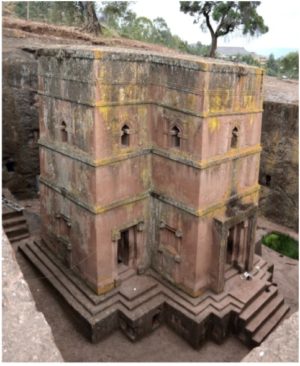
Fig. 1 – Beta Giorgyis – The Church of St. George in Lalibela. (Photo SCW)
______________________________
Prior to my first visit to Lalibela, I read various accounts: Alverez, 18th and 19th century visitors, and contemporary travelers and scholars. But it wasn’t until I stood atop the unworked bedrock peering into the carved out cavity and beheld the standing structures for myself that I apprehended what constrained previous writers. Incongruous was the first word that came to mind. That early medieval churches, literally chiseled free from stone, both inside and out, would be situated on a remote hillside in the central highlands of Ethiopia, made little sense.
Monumental hewn structures are not unique to Lalibela. Abu Simbal, the Valley of the Kings, among many other carved sites across Egypt, plus Cappadocia in Turkey, Petra in Jordan, and structures in India, are tied to trade networks, or located at crossroads or borders, and were specifically designed and situated to impress. Lalibela, however, fits none of these parameters. Something genuinely different was at play here. Its structures, and therefore its history, transcend the physical. These remain living, vibrant, churches, functioning within a pilgrim ethos still founded in the early medieval worldview. Something much deeper, more visceral, requires the story to be told in a radically different way.
For a thousand years, Lalibela has stood sentinel, overlooking an expansive valley to nowhere. Why? A mystery. As an archaeologist visiting a site for the first time, I examine the overall environment, the geology, the topography, the vegetation. Like reading an ancient crime scene, I look for the small clues, indications of humanity’s mark upon his or her landscape.
Like a sleuth, I tracked the slopes and bedrock overlooking the churches, the hewn river valleys, the two breast-shaped hills, Mount Tabor and the Mount of Olives, sites named after biblical locations thousands of kilometers to the north. Having traipsed the hills of Jerusalem and Israel for close to a decade, I was at first surprised at Lalibela’s smallness, its compactness.
Soon, however, clues emerged. Remnants of tombs carved atop the bedrock, foundation trenches of free-standing, stone-built structures, notches cut in the sides of the deep cut trenches, even a smoothed surface along a cliff-face that may have held a painted icon or an inscription, required a good deal more soil atop the bedrock back in antiquity. The Lalibela of today is not the Lalibela of the eleventh and twelfth centuries. Scoured through centuries, the original vibrancy had long ago eroded away. Today’s remnants comprise the revitalized relics of a long-past dynasty.
_________________________________
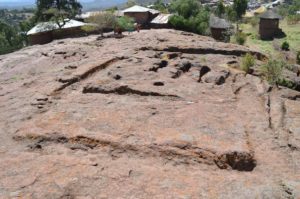
Fig. 2 – Eroded surface above the Dual Chapels of Sinai and Golgotha, showing evidence of tombs and foundation trenches from the earliest phases of occupation in Lalibela. (Photo SCW)
_________________________________
A Second Look
Since the collapse of the Aksumite Empire circa CE/AD 650, nearly four hundred silent years had limped by before the rise of the Zagwe dynasty. During this interval, no central capital, no nexus for defining “Ethiopianness” emerged. The hidden rock-hewn churches that dot the landscape of Tigrai and south into Gheralta and Tembien, retain impressive masterpieces of early ecclesiastical art and architecture, but a large, central, settled community has yet to be discovered. Previous research attributed this to the pressures of Islam, the newly dominant religion of Arabia and the Red Sea trade routes. Was Lalibela therefore all about security? The Lalibela-Lasta context failed to fit so simple or pedestrian an answer.
Contextual Framing
For my dissertation in Jordan, I researched the late Roman/early Byzantine rural structures, monasteries, and remote military outposts of the Jordanian desert from the reign of Diocletian (AD 296-304) to the eventual dominance of Constantine the Great (AD 308-330) as a newly-Christian Emperor (Walker, 2004). Such a major shift in the Eastern Mediterranean ushered in the emergence of a politically, newly powerful, Christianity.
With the evolution of a new ecclesiastical architecture came a new triumphalism. Adorning the highest cupulas of the grandest churches of the Byzantine Empire, icons flaunted Christ as Pantocrator – The Divine, undisputed champion, ruler of the universe. As an added measure of subjugation, the Hebraic terms, Yahweh Sabaoth – Lord of Hosts, and El Shaddai – Lord God Almighty, were pirated and ascribed to this Jesus of Nazareth, King of the Jews, as evidence that this new God of gods, had become the ultimate conqueror.
From Christianity’s humble origins as a peasant fellowship of fishermen along the shores of the Sea of Galilee, through three hundred years as a persecuted sect, Christendom burst forth as the state religion of one of the most powerful empires of its day. Many saw this as evidence that such a feat was ordained by God.
Christendom’s newly acquired dominance along with the subsequent, often politically motivated church councils, starting with that of Nicea (325 AD), ignited the counter-measure: the monastic movement in the deserts of Judea, Jordan, Syria, the Negev, the Sinai, and Egypt. Additionally, the Ethiopian church had maintained a presence in Jerusalem from the beginning, attending the church councils, through to the Council of Chalcedon (AD 451), where it disavowed the monophysite heresy, but maintained the miaphysite doctrine (Tewahedo), “One nature of God the Word incarnate” (Melaju, 2008).
The continuity of this history is illustrated not only by the intimate knowledge the Ethiopian Orthodox Church had of church history, but because it was integral in helping to write it. Mosaics in various 5th and 6th century Byzantine churches across Jordan, including Mt. Nebo and Petra, depict Ethiopians, evidence that communication between the two branches of Christianity were commonplace.
_________________________________
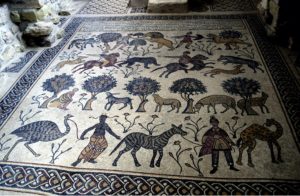
Fig. 3- Mosaic in Mt. Nebo, Jordan, depicting Ethiopian person with an ostrich, zebra, and giraffe, shown as a “camel-leopard” as it was known. (Photo SCW)
_________________________________
The word ‘monk’ comes from the Greek root mono, for “one who lives alone.” Monasticism remains the ultimate test of faithfulness to the call of discipleship. Allaying physical distractions tempered through the mortification of the flesh, prepared one for the daunting demands of spiritual discipline. What better way to be tested and proven faithful than to emulate Christ who withdrew to a deserted place for fasting and praying?
There is a deeply incarnational dimension to communing one-on-one with the Divine. Regardless of one’s faith-walk, isolation and reflection produce their own measure of spiritual reward. As opposed to the blatant political and economic messages broadcast by the architecture of the Byzantine Empire, or the earlier structures of Abu Simbal and Petra, it became increasingly clear that Lalibela-Lasta had been founded, inspired by an overarching need to dwell as a remote, monastic kingdom.
Lead me to the Rock . . .
Returning, I poured over the maps. And then, there it was. The massif of Mt. Lasta upon which the Lalibela complex is built, is situated just south of Mt. Abuna Yusef. At 4190 meters above sea level, it is the highest mountain in the region and only 430 meters lower than Ethiopia’s highest peak, Ras Dashen. A series of watersheds cuts the highlands of Ethiopia into four quadrants. Lalibela is situated just north-west of the convergence of the main mountain ridges that divides this rugged land. The Priest-Kings of the Zagwe Dynasty chose this isolation, purposely, as an island situated within an ocean of basaltic mountains. As near the center of that convergence as geographically possible, as far away from the corruption of the world, upon the farthest edge of Christendom, at the headwaters of the Tecazze River, the first Priest-Kings of the Zagwe Dynasty founded their monastic capital.
One must not, therefore, approach the Lalibela complex or surrounding churches from the standpoint simply of an archaeologist, historian, architect, or tourist. Lalibela must be seen through pilgrims’ eyes. These stone-hewn structures now retain the skeletal framework of their truer, more spiritual story. I have revisited Lalibela multiple times, seeking the greater contexts of Ethiopia’s previous identity formation in relation to the Aksumite Empire, and the direct connection this “Ethiopian Jerusalem” holds with the Jerusalem of Gold. Especially today, one must sit at the feet of ages past in order to grasp the broader medieval pilgrimage ethos surrounding the collapse of the corrupt, despotic Crusader Kingdoms in the Eastern Levant.
Seeing through pilgrims’ eyes unlocks this most extraordinary of sites to new avenues of comprehension. It creates a means of embracing the essence of the Lalibela-Lasta complex, that of greater Ethiopia, and ultimately, the whole of Africa. It illustrates just how significant and splendid these structures are, not simply as artifacts of devotion, but even more, as icons of faith, edifices of an eternal, yet grounded hope, amidst the darkness of Western Christendom’s early-medieval decay. It is within this light that the earlier churches and those of Lalibela need to be experienced.
From this elevated standpoint, the Lalibela-Lasta churches brilliantly epitomize the initial resurrection of a post-Crusader, Ethiopian kingdom of faith, that shone beyond the shadows of defeat in the Eastern Mediterranean and across North Africa. This sacred space specifically was designed to be a beacon for the many Christian-African kingdoms of the interior, even at times, casting its light upon the dim shores of Europe, stumbling in the pre-Renaissance era. Lalibela’s essence hearkens back to our origins. It remains a message across the centuries, calling all of us home to rest in the embrace of our common mother, Africa.
_________________________________
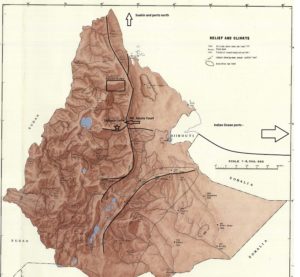
Fig. 4 – Relief Map of Ethiopia and Eretria – Note the division of Ethiopia’s highlands into distinct quadrants and watersheds, with Lalibela situated centrally.
_________________________________
Geology, Jewels, and a Miracle
The structures of Lalibela are constructed within a finger of tuff, a soft volcanic stone, which juts out into the valley. Tuff, as a softer stone made more of compacted volcanic ashes, absorbs water. When it is first exposed, one can easily carve and shape the stone with basic iron tools. I have seen masons and quarrymen dig out huge boulders of tuff and, with hammer and chisel, knock out building blocks, level, square, uniform, in minutes. And then a miracle happens. Once the stone is doused with water and exposed to air, it hardens to near concrete.
Tradition holds that after his 14-year sojourn in Jerusalem and the Holy Lands, King Lalibela received a vision. He was to build a new Jerusalem for a new priesthood serving a new chosen people of God. Visualizing Lalibela within its broader geological location, one grasps the perception of the miraculous. Consider that the site upon which the churches of Lalibela are built is less than two square kilometers of tuff in a region where, for literally hundreds of thousands of square kilometers to the north, and in an east-westerly direction, there is none (Morton, 1978, Williams, 2016). For those spiritually inclined, it is as if when God was crafting the world from time immemorial, he secreted away an infinitesimal nugget of constructional tuff in this land of ever-present, uplifted, hard basalt, for just such a time as this.
From this reddish-gray stone, King Lalibela hews a precious jewel, one of the truly magnificent world masterpieces of religious art. But it is not simply the structures themselves which speak of this brilliance. The churches, as wonderful as each are, are more than simply ecclesiastical edifices. The whole is far greater than the sum of its parts. Like all true art, Lalibela contains an astounding, hidden magic.
________________________________
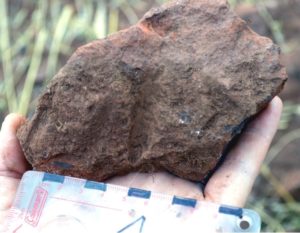
Fig. 5 – An original stone from the initial carving out of the structures, kept in a pile beside the church of Beta Giyorgis. Note the chisel marks indicating the types of tools and force used to excavate. The fact such stones were retained on site indicates they were likely considered part of the sacredness of the “work is prayer” adage. (Photo SCW)
________________________________
. . . To the Rock that is Higher Than I
In order to gain a deeper understanding of why the Lalibela complex is such a sacred space, one must grasp the ascetic world view within a monastic mental landscape. The most ancient traditions related to the birth of Jesus place it in a cave dwelling adjacent to the house of Joseph’s family in Bethlehem (Murphey-O’Conner, 1992). The fanciful stories of a wooden manger in a wooden stable behind an inn are fabrications of Renaissance artists. Given Christ’s nativity occurs in a cave, this holds special emphasis within ancient monasticism. And then there is the burial after the crucifixion, also within a cave, that completes the incarnational circle to the monastic narrative. Living one’s life in a cave is as close as one can get to living as Christ. And thus, a monastic church in a cave or a church carved out of rock is the epitome of the dwelling of God with man, or the Beta Emmanuel (Hirscfeld, 1999).
The dominant focus on the Lalibela churches and complexes continues to be architectural and art history-based. Subsequently, a critical factor for adequately and accurately expounding the wonders of the Lalibela complex and surrounding churches remains unexplored. By continually ignoring the broader political, social, and cultural formations of the Zagwe Dynasty, scholars have limited the lexicon for creating the richer narrative of Lalibela-Lasta’s far deeper significance.
The era of the Zagwe Dynasty is one of the most impressive periods of Ethiopia’s history (Pankhurst, 1990, Phillipson, 2009, 2012). It is incumbent upon us to endeavor to rediscover, through research of the significant data-sets, the sociological and broader cultural frameworks preceding and leading up to, the rise of the Zagwe dynasty. Further research is required to capture the message within the Lalibela heritage sites beyond merely its architectural significance.
Lasta-Lalibela heritage stands as a uniting historical monument to Ethiopia’s shared historical experience. As contemporary Ethiopia undergoes shifts of cultural and societal identity across ethno-national and linguistic lines, these heritages retain prominent historical value to enable the building of comprehensive, mutual understanding. Lalibela-Lasta represents the continual adaptation of ascribed identities across generations and landscapes. The cumulative transference of societal knowledge, variable skill-sets, practices, cultural material, along with the geographical location of these structures and associated sites, build upon, and enhance community well-being, religious expression, and societal identifiers for each new generation.
Historical Framework of Lalibela-Lasta
Years before ascending the throne, two years after the defeat of the Crusaders in Jerusalem in 1187 by the Ayyubid dynasty, King Lalibela visited Egypt and the Holy Land. While there, he was invited for an audience with the conqueror, Salah ad-Din (Saladin). Because the Coptic Church in Alexandria was responsible for providing the Mutran (Metropolitan) for the Ethiopian Orthodox Tewahedo Church, Salah ad-Din viewed King Lalibela as under his protection and neutral in the previous Crusader conflicts. Thus, Ethiopian and Coptic Christians were again given access to, and in some instances control of, the holy sites, a privilege denied them under the Crusaders. A Metropolitan (Mutran), as overseer of an ecclesiastical community or See, serves as the primary representative of a patriarch. Under agreement, the Coptic Alexandrian Church sent a Mutran from Egypt and the Ethiopian church would not select its own bishops or Patriarch. It is conjectured that under the Zagwe dynasty, the Priest-Kings broke with this tradition.
A brilliant example of the confluence of these two worlds, Crusader and Ethiopian, is depicted as graffiti in the Church of the Nativity in Bethlehem. As one enters the sanctuary, on one of the limestone pillars, off to the far left, are the sketched images of crusader helmets and coats of arms. Two beautiful, regal African faces, in profile, grace this pillar. Staring into that face, one can easily imagine one to be King Lalibela on his sojourn. Of course, King Lalibela was no Crusader, but it is within this frame of reference, this seeking a common good for humanity and living within the core of the Christian and monastic mandate to love one’s enemies and pray for those who persecute, that we must understand his majesty. Upon this mountain, called Roha in antiquity, translated from the Ge’ez as “pure or clean,” a new focal point emerges of a new dynasty of these priest-kings, or in the local parlance, Presbyter Jan-hoy.
_____________________________
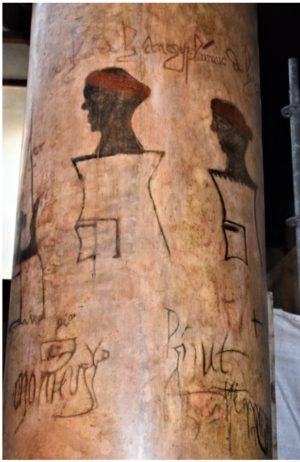
Fig. 6 – Graffiti in the Church of Nativity in Bethlehem, depicting an African face in profile, atop a Crusader helmet. (Photo SCW)
_____________________________
Finding Our Way
Pilgrimage is designed to set us right, to level the playing field. And Lalibela is one of the most profound places wherein one can be set right. But it takes work. It requires a different set of eyes, spiritual eyes, to see the beauty and wonder of not simply the stone churches, but hopefully, to apprehend the hidden, beating heart of devotion of the ancient, dynamic, living Ethiopic church that forged this icon of faith out of living rock.
In the hectic pantomime of modern Christianity, most have forsaken the practice of pilgrimage. Yet, pilgrimage or sojourning as a spiritual exercise, is a searching for the fingerprint of God. The essential element of pilgrimage is, as the word implies, leaving the security of home and seeking for that which is other. It is an intention of a destination, not simply to a sacred place, but more importantly, to dwell securely within a sacred space (Hirschfeld, 1992, Tsafrir, 1988). For the wearied wayfarer among Ethiopia’s and Africa’s early medieval Christian populace, the churches of Lalibela served and still serve as just such a space.
One major aspect of pilgrimage relates to manual labor as a form of prayer. Indeed, one finds the statement, “work is prayer” among many of the guiding principles of monastic orders. Is it any wonder then we see varying influences within the architecture and decoration in the various structures, especially in windows and cross forms? The retention of Aksumite ecclesiastical architecture, however, remains obvious throughout the Lalibela complex and earlier churches. It can be conjectured that many of these stone churches represent actual, contemporary structures which were subsequently destroyed in the religious wars of 1528-1543. Of these stone-hewn churches, architectural form supersedes function, even within many representational constructed elements. Wooden frames of windows and doors, currently found in the built churches such as Debre Damo and Yimerhane Kirstos, are exquisitely retained in stone in the Lalibela churches
Transcendence
Being religious, however, is not a requisite to appreciating or even experiencing things spiritual. The path an early-medieval pilgrim followed through the various churches illustrates how perfectly King Lalibela incorporated spiritual geography and embodied the deepest elements of the ancient pilgrimage ethos. In Zorzi’s accounts of travelers to Ethiopia in the mid-1440s, he records, “From Asquaga (modern Woldia) to Urvuar (often associated with Lalibela), and there is a king in the said great city, where are 12 churches of canons and a bishop, and the tomb of a holy king that works miracles, and has the name of Lalivela (sic); whither go very many pilgrims from all the lands.” (Crawford, 1956). But new research indicates the actual site of Urvuar to be ruins south of Istayish, serving as the administrative site to Lalibela 25 kms to the north.
The Beta Giyorgis complex, the lowest point geographically, was probably the last of the churches to be hewn. It is situated on a knoll of tuff that descends south of the main hillsides housing the other two, larger complexes. Three carved ravines designed to funnel off water, create an “island” or “mountain peak” amidst a broader ocean of stone. The eastern channel, named Gadet, meaning ‘the boundary marker between two lands’, is linked by a channel to the western gorge, referred to as the River Jordan.
In medieval times, pilgrims would initiate their pilgrimage via one of two paths at this lowest point, at the outflow of the Gadet as it runs into the south-western ravine. Via this deep cut in the bedrock, one enters Beta Giyorgis or St. George’s church within its original design. Up slope and to the west from the Gadet is a holy water site named after the dragon-slaying, mega-martyr, St. George or Beta Giyorgis, where pilgrims in need of physical, mental, or spiritual healing, or those seeking absolution for sins past, could be cleansed and begin anew – a regenesis of sorts, toward a renewed identity.
The Churches
Though dedicated to St. George, local traditions also state its architectural elements tie Beta Giyorgis to Noah’s Ark. Noah is often painted as a portrait of faith, because, as we find in Hebrews 11, Noah heeds God’s warning, believing something that had never before been seen. And thus, he and his family represent earth’s sole human survivors and heirs of righteousness.
Further, in the Epistles of Peter, Noah is held as an example of one whose faith saved not only his family, but also the whole of humanity. The spiritual geography of Beta Giyorgis serves as a rock-hewn ark secured to its own Mt. Ararat, with the priest-kings of the Zagwe Dynasty representing the faithful Noah, saving the broader Ethiopian communities, and consequently, humanity, from a deluge of sinfulness drowning the world as subsequent Crusades and other religious wars raged on further north.
Within the enclosure, to the northeast, as the craftsmen carved down, they hit the base rock of basalt. Too hard to hew, it was left and aptly named, Mt. Ararat, after the resting place of the original ark. And just as Noah’s ark had three levels and a roof, so does Beta Giyorgis, with open windows only on the upper-most level. To enter, one must ascend the seven hewn steps leading into the closed confines, the sacred security of this ark of stone. Each ascending step is higher and narrower than its predecessor, symbolizing the seven heavens, illustrating how each stride in the walk of faith requires more effort, less self-assurance, in obtaining salvation and the righteousness which comes by grace alone. Viewed from above, the series of three foundation steps which encircle the entire building give it the illusion that the last waves of the flood still lap at the now-grounded ark.
_____________________________
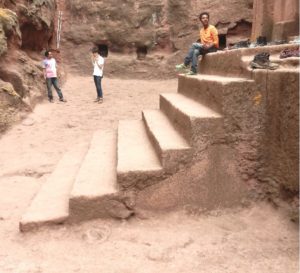
Fig. 7 – The narrowing, ascending steps to Beta Giyorgis. (Photo SCW)
_____________________________
The Church structure is said to also represent the Arc of the Covenant, containing the Decalogue or ten commandments. In the Chapel of Beta Gabriel, a wooden arc, in the exact style of Beta Giyorgis, beautifully retains that tradition in miniature.
_____________________________
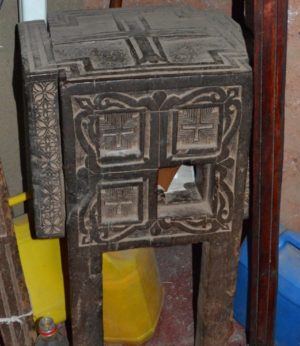
Fig. 8 – Miniature wooden Arc of the Covenant showing similarities to Beta Giyorgis Church. (Photo SCW)
_____________________________
The floral motif atop each window could be taken as the olive branch brought back by the dove, or more likely, the vine that Noah planted post-flood and from which he made the first wine. Wine, of course, becomes the essential element of the holy sacrament representing the blood of Christ. Twelve windows, three on each branch of its cruciform shape, can be any of a number of elements, but are most likely for the twelve apostles, sent to spread the good news to the four corners of the world. The roof is carved with a cross within a cross within a cross, creating a Trinitarian unity of the central symbol of Christianity.
Saved from the condemnation of the flood, one exits the ark, and ascends, up across the hand-hewn trough linking Gadet and the Jordan. It is unknown what features, in medieval times, existed upon what is now the walkway and parking lot. Further research may illuminate a passageway demarcating a causeway into the new promised land upslope. Remnants of large hewn ashlar stones demarcate a path that may represent the way through one’s own wilderness wanderings from the realm of the Old Testament into the world of the New.
______________________________

Fig. 9 – Built pathway from Beta Giyorgis leading to the narrow alley to the Tomb of Adam – (Photo SCW)
______________________________
Orthodox icons of the crucifixion usually depict the cross, planted atop Calvary or Golgotha, the place of the skull. Traditionally, the place where the cross of Christ was fixed to the Earth has been interpreted as the original burial spot of Adam, as represented by a skull and long bones. The ascent, leading to the Tomb of Adam, takes one further up to a narrow, deeply carved alley with the closed-in feel of the Valley of the Shadow of Death. Steep steps lead up through the doorway into an enclosure, creating the impression of being enclosed within one’s tomb. Like the confined chapels within Jerusalem’s Church of the Holy Sepulcher, these spaces allowed a pilgrim to individually own that she or he is, like the original sinner, Adam, dead in sin ( I Cor 15:21 – “For since by (one) man came death, by (one) man came also the resurrection of the dead”).
From a low door, petitioning humility, one emerges from that tomb, to arrive at the twin chapels of Sinai, also referred to in the literature as Beta Mika’el, representing the giving of the Mosaic law, and Golgotha, where grace and forgiveness were bestowed upon humanity.
________________________________
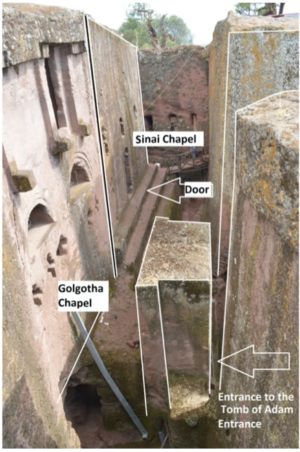
Fig. 10 – Site of the Tomb of Adam looking down, with the dual chapels of Sinai (Beta Mika’el) on the far end, and Beta Golgotha, closer. Note the original door to Sinai (indicated by the top arrow) is rarely utilized today. It should be noted that entrance into Golgotha is only accessible through the Sinai chapel, possibly indicating that salvation comes only by passing through the law into grace. (Jn. 1:17- “Since though the law was given to Moses, grace and truth have come through Jesus Christ.” Jerusalem Bible, 1966). (Photo SCW)
________________________________
These dual churches, representing the old and new covenants, tie the Hebraic or Judaic heritage of the earliest representations of the living church to this modern living Ethiopic heritage and traditions. One of the verses often quoted in regard to this long historicity and connectivity to the promises of God through King David, is Psalm 68:31: “Princes shall come out of Egypt; Ethiopia shall soon stretch out her hands unto God” (KJV). This entire complex reverberates with the sense that these structures are designed to boldly claim that promise fulfilled. In a sense, these structures illustrate that the Gospel has indeed been preached to the ends of the earth.
The first structure, known as Beta Mika’el, or alternatively, as Mt. Sinai, represents the giving of the law. Mt. Sinai, where Moses received the law, proves our need of salvation. Access to the sanctuaries of Mt. Sinai and then Golgotha, originally required one to nearly circumambulate the building, to the far end, and then negotiate narrow steps to traverse the slender path along the exterior wall. Just as the Children of Israel wandered for forty years, and Jesus fasted for forty days in the wilderness, this path requires of a pilgrim time to prepare for entrance into these two sanctuaries. The eastern door, now rarely used, would have ushered a penitent into the closed confines of Sinai, which contains solid pillars and an aura of heaviness. With high, small windows, condemnation is palpable. Highly-stylized “angels’ eyes” stare, unblinkingly from every corner of each capital.
The second chapel, Golgotha, represents the giving of grace which now covers the debt of humanity’s sin. Beta Golgotha, off-limits to women, hides secrets. It is the only church with life-size relief statuary incorporated in the walls. There is argument as to whether the statuary are original, or later additions. Evidence for the argument that they are original, are similar pillar capitals, as well as a similar feature of a standing cleric, found in Kankanet Mika’el, far up slope from the main Lalibela complexes, on the way to the Hudad Plateau.
_______________________________
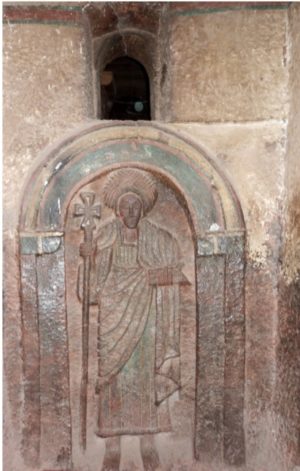
Fig. 11- Relief statue in the chapel of Beta Golgotha – The sheen upon the stone comes from centuries of pilgrims venerating the image in prayers and petitions.
_______________________________
The back part of the nave houses what is known as the Sellassie Chapel (Phillipson, 2009, Merceier, 2012). Normally a thick curtain covers the entrance to this chamber, protecting, as far as it is known, the only chapel in Christendom with three separate altars, one for each member of the Holy Trinity: Father, Son, Holy Spirit. Typical Ethiopic icons of the Trinity represent three sagacious, identical depictions of the one nature of the triune God. All equally share that single nature of Godhead from before creation, all eternally, self-existing. This triunity strongly exemplifies the miaphysite concept of God being of a single nature, rather than the dual nature doctrine – diaphysite – of other Orthodox, Catholic, and Reformed/Protestant traditions (Melaku, 2008).
The long Ethiopic presence in Jerusalem, especially as it relates to the Church of the Holy Sepulcher, has forged a deep link to the Holy Land and its spiritual history. Immediately after the Ayyubid re-conquest of Jerusalem in 1187, the Ethiopic church served as primary custodian of these holy sites. It is not unlikely that King Lalibela would have been intimately engaged in that administration. By recreating a tomb of Christ in Ethiopia, King Lalibela may have selected this back chapel as his final resting place, complete with a depiction of a resting or prone Christ, perhaps illustrating in stone, the incarnational aspects of the unified salvific work of both a human and divine nature, central to the belief of the Tewahedo or the miaphysite doctrine.
Having immersed oneself within the covenants of law and grace in Sinai and Golgotha, one then ascends a series of steps and navigates winding carved corridors, further upslope, to the large open area containing Beta Maryiam, the Church of Mary. Flanking this sanctuary are two smaller chapels, the chapel of the finding of the true cross (Beta Masqal) to the north, and the chapel of the 40 virgin martyrs (Beta Danagel) to the south.
Beta Maryiam is the only church that boasts an interior of colorful decorations and painted fresco icons. In the same way that St. Mary served as the vessel for incarnationally carrying Christ, so we as pilgrims, by entering this sacred space, partake in that incarnation and, as the true church, become the physical representation of Christ to the world. The open courtyard proffers the first place that pilgrims might celebrate communally. It is here the festival of incarnation at nativity, Ethiopian Genna, takes place each year. Multiple narratives coalesce within this complex. In a spiritual sense, the whole of the gospel abides herein: The Magnificat of Mary, the nativity, the incarnational ministry of Christ, the crucifixion, the faithfulness of martyrs.
________________________________
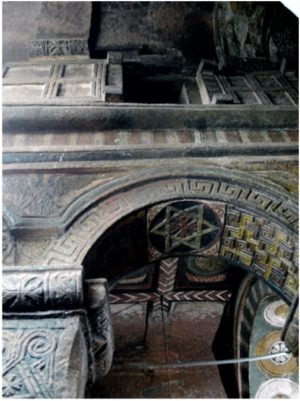
Fig. 12 – Interior of Beta Mariyam – The carved and painted designs retain the physical representations of the wood-carved, painted interiors of churches such as Yimerhane Kirstos, which predate the Lalibela churches. (Photo SCW)
________________________________
To the north lies a carved pool containing holy water where tradition states that barren women might be submerged and obtain fertility. The secret, hidden hope of barren women, also finds a place among the grandeur of this story. Just as God, through Mary, bestowed a physical child to Mary, and thus to the world, so He did for Sarai-Sarah, Revkah-Rebekah, Hanna, and the multiple nameless women who, through tears and social pain, found favor in a God who holds women in the highest esteem.
______________________________
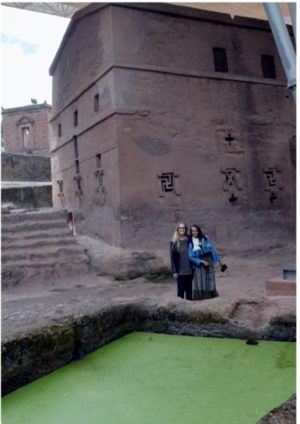
Fig. 13 – The submersion pool with Beta Mariyam in the background. The baptistery steps are to the left. In the Early medieval periods, the reverse swastika motif was commonly associated with the tree of life, and can be seen represented in cultural material from Phoenician, Assyrian, and Indian cultural contexts. (Photo SCW)
______________________________
One final step, however, is required to usher the pilgrim into eternal, spiritual life. Through a constricting corridor within the imposing cliff face, like a passage through death into heavenly life, pilgrims lastly enter the large open space that houses Bete Medhane Alem, or Savior of the World Church. As the largest church, this would have served as the culmination, the high point of pilgrimage. The open area provided ample space for pilgrims to communally celebrate their renewed salvation. Inside, no imposing icon of Christ as Pantocrator looks down upon a sinful humanity. Here, it is the child-Christ, held by Mariyam, who reigns. From an Ethiopic (EOTC) perspective, this is the deity the world needs today, not the crusade-bent, angry god of so much of western Christendom.
Having completed our pilgrimage, the steps to the north allow one to ascend further, where, with an added hope, pilgrims look uphill, to the symbolic Mount of Olives, from which Christ ascended, and upon which he will return as Savior of the World.
_______________________________
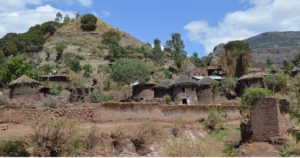
Fig. 14 – The Mt. of Olives viewed from the Medhane Alem church, finalizing the pilgrimage experience. (Photo SCW)
_______________________________
Much more can, and should be said about this masterpiece of ecclesiastical architecture, part of this broader narrative within Ethiopian Christianity. The administrative complex further southeast, along with Mt. Tabor commemorating Christ’s transfiguration, contain multiple mysteries in their own right, yet have not been part of the broader discussion of this paper.
Here, it is Ethiopia’s narrative that must prevail. The living church of the EOTC community constitutes the primary custodian of the centuries-old heritage, and it is, therefore, their story to tell. Often, the parochial, colloquial imposition of outside academic, disengaged, world views have dominated the retelling of what is Africa. That must change. In much of the literature about Lalibela and the larger Ethiopic Tewahedo church traditions as a whole, a subtle, or occasionally overt sentiment persists that these traditions are somehow failed attempts at emulating “our more enlightened, more scholarly and sophisticated” western churches, or post-Christian world.
Often academia or scholars seek for minutia, or the mere stones and bones of an ancient tradition. Care is required lest we assume, because Western sacred sanctuaries have been reduced to museums or pubs, that Lalibela could be similarly defined. Continuing research sings a dynamically different story, however.
For now, our goal and honor remains to work with the Ethiopian Orthodox Tewahedo Church to train local clergy and heritage management experts and equip them to discover and discern even more of Lalibela’s enchantment. Thus might these sanctuaries and adjacent settlements reverberate with further sacredness within their deeper, intended spirituality. Through continual co-research, it is hoped that more of the hidden messages are revealed as these Lalibela-Lasta complexes and communities still whisper secrets left nearly a thousand years ago.
Qidus, Sanctus, Holy
Like the first outsiders, however, I too must admit to only touching the surface of this mystical Holy Land. One final discovery, however, came to light while researching Ethiopic crosses. When one views the greater whole of the entire ecclesiastical complex of Lalibela, it becomes clear that the actual layout is designed to serve as more than a simple pathway for pilgrimage. The churches, chapels, and tunnels of Lalibela are themselves actually a magnificent, carved, monumental icon of the crucifixion.
Like the Ethiopian hand cross that every priest and monk carries, the bottom of the cross represents the square arc of the covenant. Other traditions relate that it represents the four corners of the world. Connecting the arc and the cross is the handle, representing the passageway to the foot of the cross, planted upon the tomb of Adam. In rare examples, the handle depicts Adam, rooted in his grave, with a shoot from the Tree of Paradise becoming the timber for the crossbeam for the crucifix. This apocryphal story is found in many older traditions, including a thread about King Solomon’s building of the Temple. The four branches of the cross emanating from the center, like the Jerusalem cross, comprise the core of the standard hand cross (Korabiewics, Waclaw, et al 1973).
As part of my research, I have come to the conclusion that every church or chapel in this complex represents an element of Christ’s sacrifice. The dual sanctuaries of Mt. Sinai (Beta Mika’el) and Golgotha comprise the two wounds of Christ’s feet. The Chapels of the Finding of the True Cross and the 40 Martyrs represent the nail-wounds in his hands. Beta Maryiam, the central place for incarnation, fully and beautifully represents the spear to his heart. For some, this similarly represents that Mary, Queen of Heaven and Co-Redemptrix, had her heart pierced as well. In the Middle Ages in Europe, the concept that St. Mary participated as an agent of redemption or salvation for humanity was promoted by the early Franciscans as a doctrine. It is not known to what extent this idea was present within the Zagwe dynasty, if at all. The Bete Medhane Alem, as the culminating sanctuary, honors the Savior of the World, and brilliantly represents his crown of thorns.
____________________________
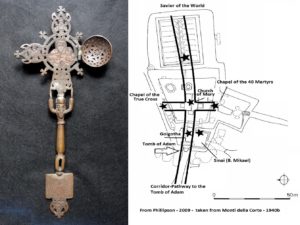
Fig. 15 – Ethiopian hand-cross depicting Adam holding up the cross. The bottom is the Arc of the Covenant and each branch of the cross illustrates a wound, with Mary and Christ in the center (Photo SCW). A map of the Ecclesiastical structures illustrating the natural layout of the various sanctuaries (after Phillipson – 2009).
____________________________
As a sacred space, therefore, Lalibela-Lasta continues sharing the dividends of its spiritual economy, bestowing hope and identity to a nation so rich in heritage, but for so long hidden from the outside world.
Cover Image, Top Left: Bete Giyorgis (Church of St. George), Lalibela, Ethiopia. Bernard Gagnon, GNU Free Documentation License, Wikimedia Commons
_____________________________________
References:
Alvarez, Fransesco, Narrative of the Portuguese embassy in Abyssinia during the years 1520-1527. Translated from the Portuguese and edited with notes and an introduction by Lord Stanley of Alderly. Hakluyt Society, (Ser. I Vol. 64). London, GB. (1881).
Assefa Balacha, The Spiritual Role Pilgrim to Lalibela; A Paper presented to the Heritage Conference at Lalibela organized by Woldia University, May 14- 17,( 2018).
Ayalew Seregew, The Role of the Ethiopian Orthodox Church in the Development of Tourism Proceedings, Ethiopian Church Yesterday, Today and Tomorrow, Workshop of Mahibere Kedusan , Addis Ababa, (2000).
Dagnachew, K., Church and Heritage Conservation (Amharic Article). In the Symposium of Archaeology and Anthropology; ARCHH, Addis Ababa, (2003).
David T. H., Heritage Tourism and Society. Mansell Publishing Ltd., (1995).
Girma E., A Guide to Historical Sites in And around Aksum, Mega publishing Enterprise, Addis Ababa, (1997).
Hirschfeld, Yizhar, The Judean Desert Monasteries in the Byzantine Period. Yale University Press, (1992).
Hirschfeld, Yizhar, The Early Byzantine Monastery at Khirbet Ed-Deir in the Judean Desert: Excavations in 1981-1987. Qedem Monographs of the Institute of Archaeology – The Hebrew University of Jerusalem, 38, (1999).
Korabiewics, Waclaw & Turski, S., The Ethiopian Cross, Addis Ababa: Holy Trinity Cathedral, 1973.
Kinsgley, Sean, & Decker, Michael, Ed., Economy and Exchange in the East Mediterranean during Late Antiquity – Preceedings of a conference at Somerville College, Oxford, 29th May, 1999. Oxbow Books UK, (2001).
Leask, A & Fayall, A. Managing World Heritage Sites. Amsterdam, Charol Tec. Ltd, (2006).
Littmann, Enno, Deutsche Aksum-Expedition, herausgegeben von der Generalverwaltung der Königlichen Museen zu Berlin 1906. Band I-[IV]. G. Reimer, Berlin, (1913). Found at – https://catalog.hathitrust.org/Record/001970814
Matias, A & Nigi, P. Advances in Tourism Economics: New Developments. Newyork, Heidberg, (2009).
Melake M. K. Merahi, Christianity in Ethiopia II, Addis Ababa, (2009).
Melake M. K. Merahi, Christianity in Ethiopia III, Addis Ababa, (2012).
Melaku, Luel, History of the Ethiopian Tewahedo Church – Part I, Addis Ababa, (2008).
Mengistu G. Lalibela and Yimirhane Kiristos: the Living Witness of the Zagwe Dynasty. Addis Ababa, (2004).
Merceier, Jacques. & Lepage, C., Lalibela: Wonder of Ethiopia the Monolithic Churches and Their Treasures. Shama Books, (2012).
Ministry of Culture and Tourism. Federal Democratic Republic of Ethiopia Tourism Development policy. Addis Ababa, (2009).
Morton, Bill, A Field Guide to Ethiopian Minerals, Rocks and Fossils. Addis Ababa University Press, (1978).
Munro-Hay, S. C., Excavations at Aksum – an account of research at the ancient Ethiopian capital directed in 1972-4 by the late Dr. Neville Chittick, Memoirs of the British Institute in Eastern Africa: Number 10, The British Institute in Eastern Africa, (1989).
Murphey-O’Conner, Jerome., The Holy Land – An Archaeological Guide From Earliest Times to 1700, p 207 – 1992.
Newman, James L., The Peopling of Africa – A Geographical Interpretation, Yale University Press, New Haven and London, (1995).
Orlinsky, Harry M., Ancient Israel, Cornell University Press, Third Printing January, Ithica, NY, (1956).
Pankhurst, Richard, A Social History of Ethiopia. Institute of Ethiopian Studies, A.A.U, (1990).
Phillipson, David W., Ancient Churches of Ethiopia – fourth-fourteenth centuries. Yale University Press. New Haven & London, (2009).
Phillipson, David W., Foundations of an African Civilisation – Aksum and the northern Horn. James Currey, London,( 2012).
Pritchard, James B. ed., The Ancient Near East – An Anthology of Texts and Pictures, Princeton University Press, (1958).
Russel, Michael, Nubia And Abyssinia: Comprehending Their Civil History, Antiquities, Arts, Religion, Literature And Natural History. Oliver & Boyd, Tweeddale Court: And Simpkin & Marshall. Edinburgh, (1833).
Sergew Hable Sellassie (Chairman of Publication Committee 1970), The Church of Ethiopia – A Panorama of History and Spiritual Life, 2nd Printing 1997on the occasion of the 7th Assembly of the AACC – Addis Ababa.
Sergew Hable Sellassie, Ancient and Medieval Ethiopian History to 1270. Haile Selassie I University, Addis Ababa, (1972).
Tadesse T. Church and State in Ethiopia: 1270–1543. Chalendon Press, Oxford, (1972).
UNESCO. Shelters for the Five Churches in Lalibela: Preservation of Rock Hewn Churches of Lalibela, ARCCH, (1995).
Tsafrir, Yomar, et al. Excavation at Rehovot-in-the-Negev, Volume I: The Northern Church, QEDEM Monographs of the Institute of Archaeology – The Hebrew University of Jerusalem 25, (1988).
United Nations Educational, Scientific and Cultural Organization. Convention Concerning the Protection of the World Cultural and Natural Heritages. Paris Adopted by at the Conference of the Seventeenth Session, (1972).
Walker, Samuel C., Ethiopia must overhaul archaic heritage system to protect ancient treasure. (October 29, 2018). https://www.ethiopia-insight.com/2018/10/29/ethiopia-must-overhaul-archaic-heritage-system-to-protect-ancient-treasures/
Walker, Samuel C., Aksum’s true glory kept under wraps by fearful bureaucracy, (November 7, 2018)
• https://www.ethiopia-insight.com/2018/11/07/aksums-true-glory-kept-under-wraps-by-fearful-bureaucracy/
• Walker, Samuel C., Revealing Barara—the long-lost African medieval city, (April 23, 2019). https://www.ethiopia-insight.com/2019/04/23/revealing-barara-the-long-lost-african-medieval-city/
• Walker, Samuel C. Revealing Barara: The Long-Lost African Medieval City,
https://popular-archaeology.com/article/revealing-barara-the-long-lost-african-medieval-city/
(Apr 10, 2019).
Williams, Francis, Understanding Ethiopia: Geology and Scenery, Springer Press, (2016).
Ya Agew Hezboch Tarik (in Amharic), revised edition, Addis Ababa, (2009).
Author details: swalkercisuog@gmail.com -ET: +251-966262008 US 425-772-9123
Keywords – Ethiopia; Lalibela; King Lalibela; Lasta; Ethiopianhistory; Zagwe ethiopianorthodoxtewahedochurch; EOTC; stonechurch; pilgrim; urvuar
__________________________





